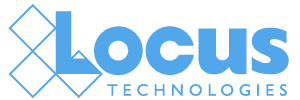Locus Isn’t Your Typical EHS Software Company: Five Reasons Why Team Members Stay
Earlier this year, I became the longest serving employee at Locus Technologies. So why have I stayed at Locus for so long?
Earlier this year, I became the longest serving employee at Locus Technologies. So why have I stayed at Locus for so long?
While change is expected, it’s often not anticipated, and unforeseen events can force businesses to adjust their practices.
Knowing the status of your samples and analyses can aid when to start your report or research in EIM as well as…
Greenhouse Gases (GHG) Reporting Deadline for the Year 2024 Extended from March 31, 2025, to May 30, 2025.
At Locus, our Environmental Information Management (EIM) system stores an extensive array of data locations, field samples…
Inspections and audits are a critical aspect of various sectors, including safety, waste management, environmental compliance, construction, etc.
Celebrating Pi Day and the “Constants” that Define our Approach to Environmental Compliance and Sustainability.
Delay of Effective Date of adding certain PFAS to the TRI.
Rollups of software companies have truly dramatic impacts on the organizations that rely on those software products.
As the Corporate Sustainability Reporting Directive (CSRD) takes shape, businesses are preparing for new ESG reporting requirements.
Sorry, no posts matched your criteria
Locus Technologies » Sustainability » Page 8
299 Fairchild Drive
Mountain View, CA 94043
P: +1 (650) 960-1640
F: +1 (415) 360-5889
Locus Technologies provides cloud-based environmental software and mobile solutions for EHS, sustainability management, GHG reporting, water quality management, risk management, and analytical, geologic, and ecologic environmental data management.
